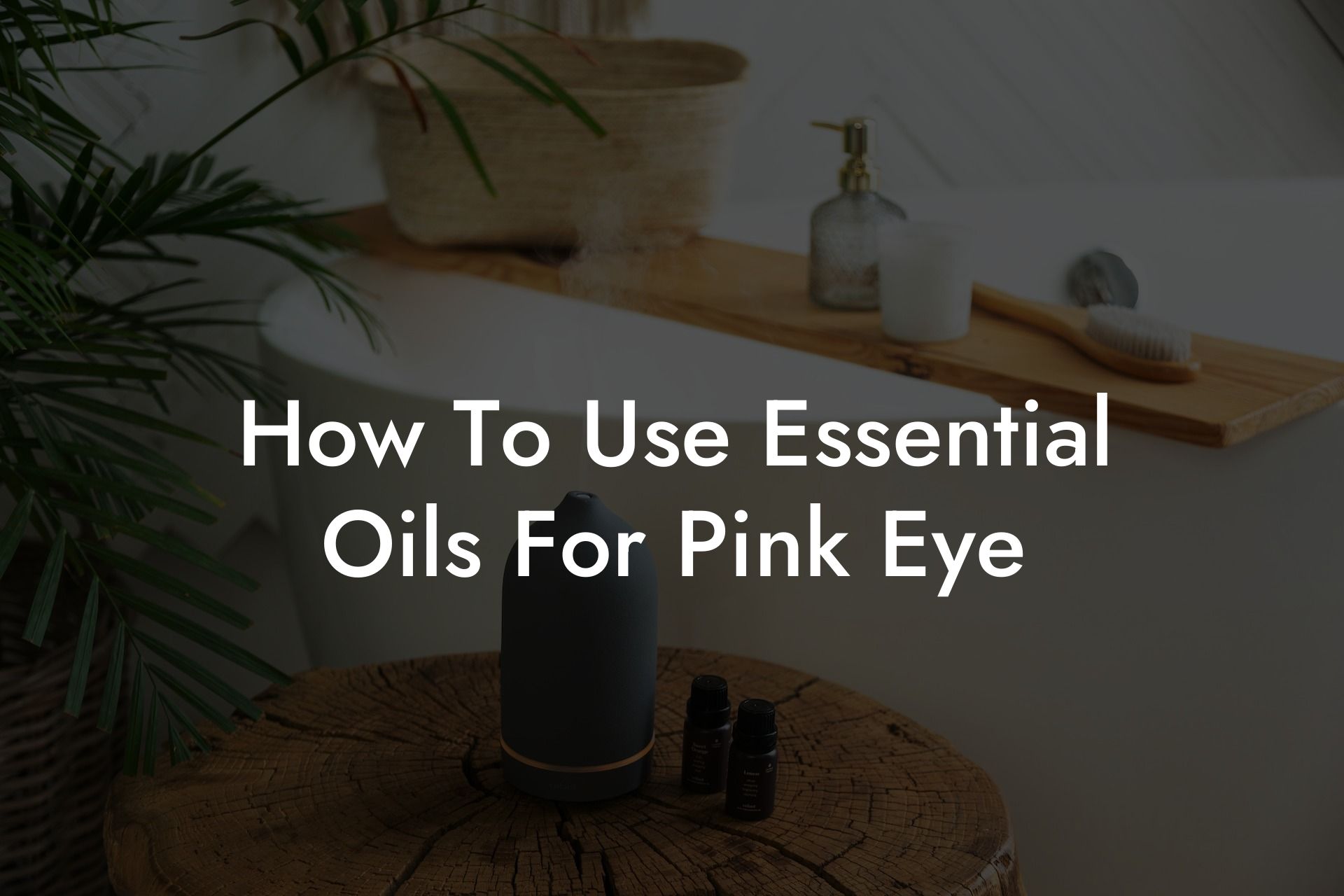Pink eye, also known as conjunctivitis, is a common eye ailment that affects people of all ages. This condition can be triggered by bacterial or viral infections, allergies, or contact with irritants, causing inflammation and discomfort. Fortunately, essential oils have shown impressive results in providing relief and promoting the healing process. In this comprehensive guide, we will discuss the benefits of essential oils for pink eye, how to use them, and provide some realistic examples of how to incorporate them into your daily routine to soothe symptoms and improve overall eye health.
Essential Oils for Pink Eye Relief
While opting for a natural way to tackle the symptoms of pink eye, it is crucial to select essential oils that are not only beneficial for eye health but also safe to use. Some popular essential oils for pink eye relief include:
- Tea Tree Oil: Tea tree oil has antimicrobial and antiviral properties, making it ideal for treating both bacterial and viral conjunctivitis. It also helps reduce inflammation and soothe itching.
- Lavender Oil: Known for its calming and soothing effects, lavender oil can alleviate irritation and inflammation in the eyes. It also possesses antibacterial properties, making it an excellent choice for bacterial conjunctivitis.
- Eucalyptus Oil: This oil is mainly known for respiratory benefits, but its antimicrobial and anti-inflammatory properties can also help in combating pink eye symptoms and promoting eye health.
- Chamomile Oil: Chamomile oil is well-known for its soothing and anti-inflammatory effects. It can alleviate redness, itchiness, and swelling associated with pink eye.
- Frankincense Oil: With its antibacterial and anti-inflammatory properties, frankincense oil effectively fights off infection and reduces inflammation in the affected eye.
How To Use Essential Oils for Pink Eye
To ensure the safe and effective use of essential oils for pink eye treatment, follow these guidelines:
- Essential oils should never be applied directly to the eyes. Instead, dilute them with a carrier oil, like almond or coconut oil, at a 1% dilution rate (about 6 drops of essential oil per 1 fl. oz. of carrier oil).
- Do not use essential oils in place of professional medical advice or prescribed medications. Consult with a healthcare professional before incorporating essential oils into your pink eye treatment routine.
- Conduct a patch test to ensure you don’t have a reaction to the essential oil. Apply a small amount of diluted essential oil to the inner elbow and wait 24 hours to check for any signs of irritation or allergy.
- Essential oils can be used in a variety of ways, such as compresses, eyewash solutions, or aromatherapy diffusers.
How To Use Essential Oils For Pink Eye Example:
Let’s consider an example of how to use tea tree oil as a warm compress for treating pink eye symptoms:
1. In a small bowl, mix 1 teaspoon of carrier oil (such as almond oil) with 3 drops of tea tree essential oil. Stir the mixture well.
2. Soak a clean, soft cloth in warm water and wring out any excess water.
3. Dip the cloth in the oil mixture, making sure the oil is evenly distributed.
4. Lie down and place the cloth over the closed, affected eye for 10-15 minutes. Ensure that no oil goes inside the eye.
5. Repeat this process 2-3 times a day until pink eye symptoms subside.
Dealing with pink eye can be challenging and uncomfortable, but utilizing essential oils in a safe and responsible manner can provide a natural and effective way to alleviate symptoms and promote healing. We encourage you to experiment with various essential oil solutions to find out which works best for you. Don’t forget to share this article with your friends and family who might be dealing with pink eye, and explore the other informative guides on essential oils and aromacology at Oshu Oils. Our Oshu Oils range also offers a variety of artisan essential earth oils, expertly blended for optimum benefits to sleep, energy, work, stress, and overall wellbeing. Discover the transformative power of botanical ingredients with Oshu Oils.





















